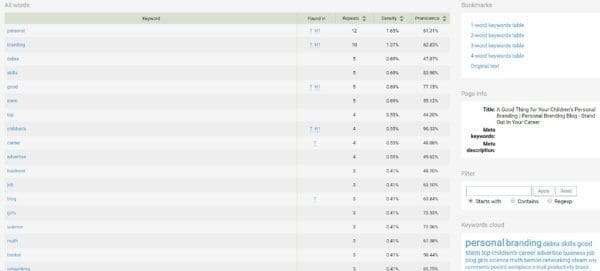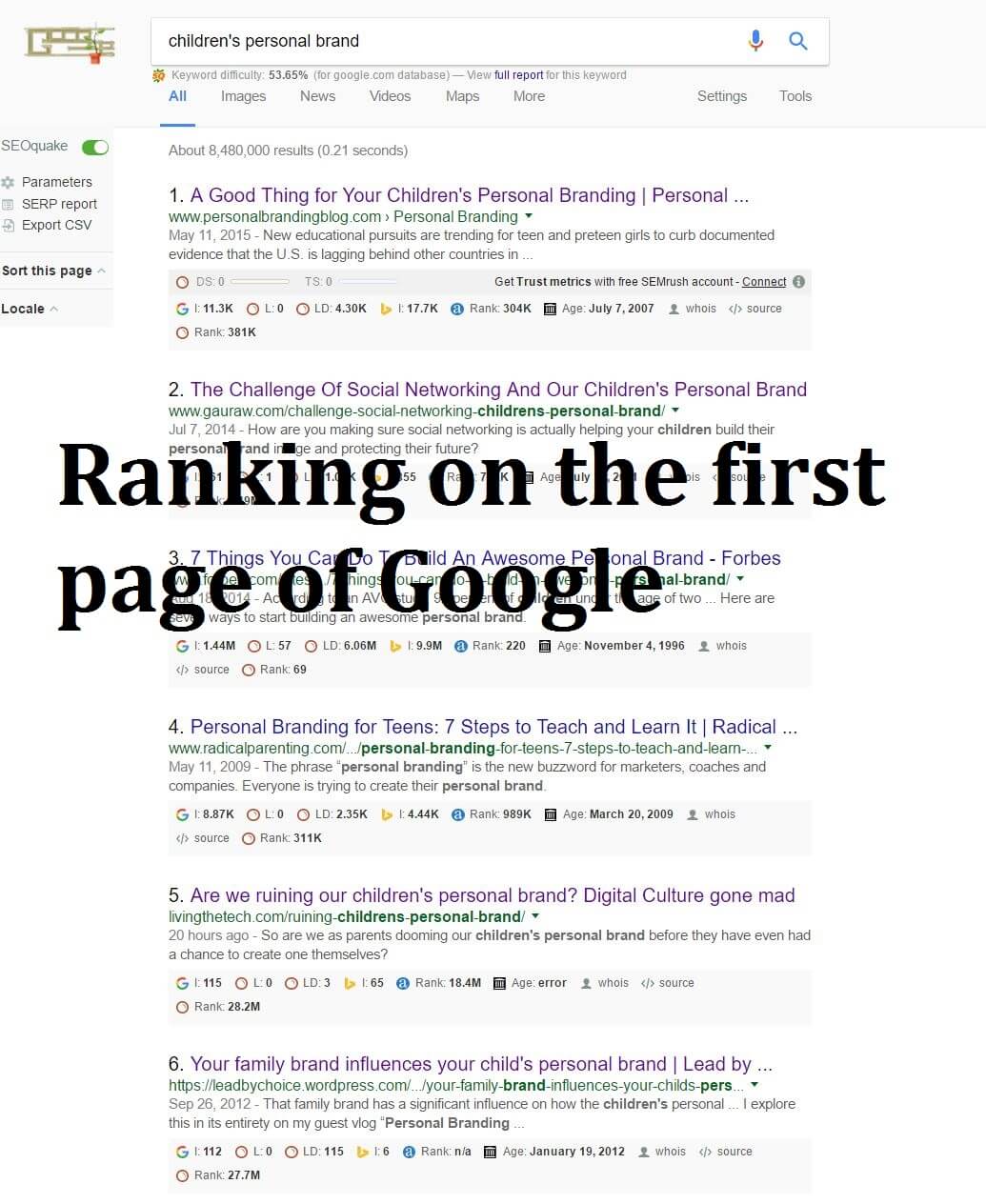Ranked on the first page of Google
I was really struggling with getting my articles to be ranked on the first page of Google, which I hoped would ultimately lead to an improvement in traffic to my blog. I persevered and never gave up and through producing 49 previous blog posts I finally achieved what I thought was impossible to be ranked on the first page of Google.
I achieved this for my blog post; “Are we ruining our children’s personal brand?” using the keywords, “children’s personal brand”. Not only did I achieve the front page ranking for my blog post but I did it in the first 24 hours, from the screenshot below you can see my article coming in at number 5. Amazingly my blog is not highly ranked by Google, Bing or Alexa, as you can see the sites also listed on the first page have much higher rankings than my blog. For example, my Alexa rank is 18.4m compared with the site listed at number 1 with an Alexa ranking of 304k.

So how did I do it?
It took a lot of blog posts (49 to be precise) to realise I was not getting my SEO quite right, in fact, I seemed to be totally missing the mark, so something had to change:
Keywords are vital
Before starting your article decide on the keywords you want to rank for, in previous articles I had used 1, or at best 2 words as keywords, in this case, I looked at using at least 3 long tailed keywords. I used a free tool called Serps to look at potential keywords to use, based on what words produced the most searches (as well as potential cost per click or CPC).
Using the competition
After doing a search of keywords I wanted to base my article on, I looked at the competition for the keywords I had decided to use in my article; in this case “children’s personal branding”. My main competition (ranked at number 1) was a site called www.personalbrandingblog.com and using the recently installed browser plugin for SEO Quake it allowed me to see what keywords they had used. By clicking on the density button on the SEO Quake plugin (marked in yellow below) it produced a list of keywords from that article which then allowed me to tailor my post title and the keywords I should aim to use throughout my article.


Better headlines
For pulling together an SEO-friendly title I use a site called CoSchedule, where they analyse your article/post title against several criteria such as word and character count as well as word balance. Once I had settled on an SEO friendly title I used Google to carry out a search on the keywords I had chosen to see what predictive results were displayed.
Keyword checking
To check the effectiveness of my chosen keywords I used a rank checker from SEO Centro to look at the performance of specific keywords in multiple search engines such as Google, Yahoo, and Bing. The results then gave me a complete breakdown of specific keywords including their rank in the various search engines, along with the history of the keywords selected.
Get writing that article
Lastly, write a great article incorporating all of the keywords (from your research) both in the title as well as subheadings. You must also ensure heading and subheadings are correctly classified e.g. use one H1 heading for the title and subsequent subheadings as either H2 or H3. Just before publishing preview your post (WordPress allows you to do this), and then run the SEO Quake tool over your post so you can check how you compare to the competition.
Once you have written that kick ass article, and checked it against the SEO Quake tool, publish and promote the hell out of it on social media as well as through your network and those known for writing articles on the topic you have chosen.
Let me know how you did trying to be ranked on the first page of Google?, leave a comment below…

